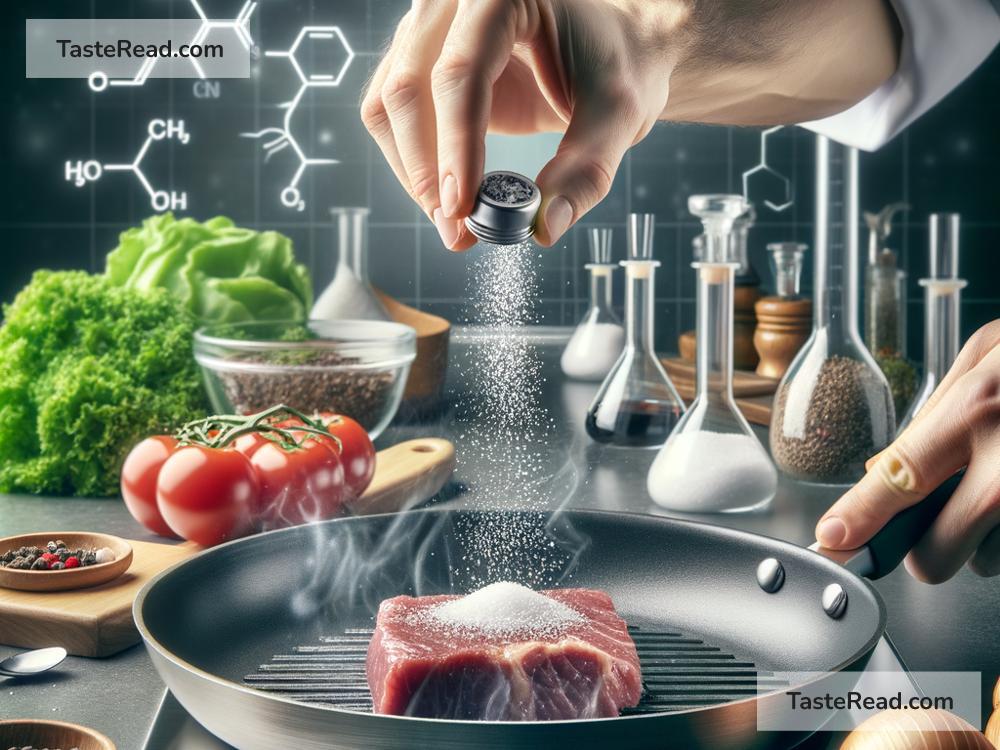The Science of Cooking with Chemical Expertise: Techniques and Tips
Cooking isn’t just an art; it’s also a science! Every dish we prepare is a result of chemical reactions happening in the kitchen. Understanding these reactions can help us become better cooks and give us the tools to troubleshoot when things go wrong. In this blog, we’ll explore how chemistry shapes the way we cook and share simple tips to improve your techniques using scientific know-how.
What is the Science of Cooking?
Cooking is essentially the process of transforming raw ingredients into delicious food. When you mix, heat, cool, or season ingredients, chemical reactions occur. These reactions change the structure, flavor, and appearance of the food. For example:
- When you bake a cake, heat causes proteins to coagulate, sugars to caramelize, and gas bubbles to expand, making the cake rise and turn golden brown.
- When you sear a steak, a reaction called the Maillard reaction creates the rich, savory flavors you love.
Knowing the science behind these processes can help you make better decisions in the kitchen. Let’s dive into some principles and tips that will improve your cooking.
Temperature Matters
Heat is a key factor in cooking and influences how food looks and tastes. Here are some scientific tips related to temperature:
-
The Maillard Reaction: Have you ever wondered why browning meat or bread smells so amazing? The Maillard reaction is a chemical reaction between proteins and sugars when heated. To get perfect browning, use high heat and dry surfaces. Pat your meat with paper towels before searing, and avoid overcrowding the pan.
-
Precision Cooking with Sous Vide: Sous vide (French for “under vacuum”) is a cooking method that uses precise temperature control. It involves sealing food in a bag and cooking it in water that’s maintained at a steady temperature. Because the heat is controlled, food cooks evenly and doesn’t overcook. It’s perfect for making juicy chicken or tender steak.
-
Understanding Boiling and Simmering: Boiling is rapid bubbling at 100°C (212°F), while simmering is slower bubbling at slightly lower temperatures. Simmering is ideal for soups and sauces because it prevents evaporation and keeps flavors concentrated without over-agitating the dish.
Know Your Ingredients
Every ingredient has its own chemical properties that affect how it behaves during cooking. Here are a few tips:
- Acids and Bases: Did you know that the taste and texture of food can be affected by pH levels? For example:
- Adding lemon juice or vinegar (acids) can brighten flavors and tenderize meat.
-
Baking soda (a base) can increase browning and make cookies spread more during baking.
-
Protein Power: Proteins in meat, eggs, and dairy change when exposed to heat. Cooking eggs slowly can give you creamy scrambled eggs because proteins unfold gently instead of clumping together. Similarly, low heat can help keep meat juicy during cooking.
-
Starches and Gelatinization: Starches like flour and cornstarch thicken sauces when heated in liquid. This happens through a process called gelatinization, where starch absorbs water and swells. To avoid lumps, whisk your starch into cold water before adding it to hot liquids.
-
The Secret Behind Salt: Salt isn’t just for flavor—it’s a chemical multitasker. It draws out moisture, enhances natural flavors, and can even change the texture of food. For example, salting cucumbers before making a salad removes excess water and keeps them crisp.
The Role of Time
Time is another essential factor in cooking. Some chemical processes happen quickly, while others take time to develop. Here’s what you need to know:
-
Marination Magic: When you marinate meat, acids in the marinade break down proteins, making the meat more tender and flavorful. However, marinating for too long can make the texture mushy, so follow the recipe’s timing.
-
Resting Meat: After cooking, let meat rest for a few minutes before cutting into it. This allows juices to redistribute, giving you a juicier result.
-
The Slow and Steady Method (Low and Slow Cooking): Foods like stews and roasts benefit from cooking at low temperatures for long periods. Slow cooking allows flavors to meld and tough cuts of meat to become tender.
Troubleshooting in the Kitchen
Despite your best efforts, things sometimes go wrong in the kitchen. Scientific knowledge can help you fix common problems:
-
Sauce Too Thin? Add a thickener like cornstarch or flour and simmer to activate the starch.
-
Soup Too Salty? Add a raw potato or extra liquid to dilute the saltiness.
-
Overcooked Meat? Slice it thinly and serve with a sauce to add moisture and mask dry textures.
-
Flat Cake? Check your baking powder or soda’s expiration date. These leavening agents create bubbles that help cakes rise, and expired ones won’t work effectively.
Conclusion
Cooking with chemical expertise doesn’t mean you need to be a scientist—it simply involves understanding the reactions that happen in your kitchen. By learning about temperature, time, and the unique properties of ingredients, you can elevate your culinary skills and troubleshoot problems with confidence.
So the next time you cook, think about what’s happening on a molecular level. Whether you’re searing, sautéing, baking, or simmering, your knowledge of cooking science will help you create tastier, more consistent results.
Happy cooking—and happy experimenting!


